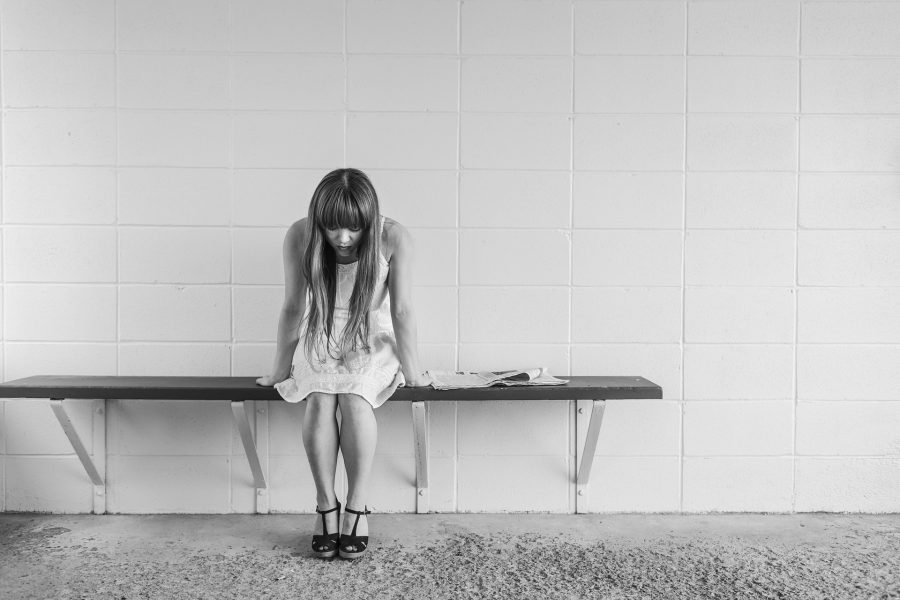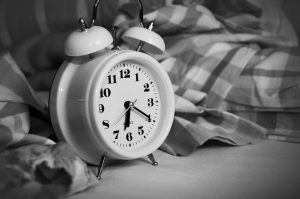Definition: Bipolar disorder, also known as manic-depressive illness, is a brain disorder that causes unusual shifts in mood, energy, activity levels, and the ability to carry out day-to-day tasks.
There are four basic types of bipolar disorder; all of them involve clear changes in mood, energy, and activity levels. These moods range from periods of extremely “up,” elated, and energized behavior (known as manic episodes) to very sad, “down,” or hopeless periods (known as depressive episodes). Less severe manic periods are known as hypomanic episodes.
Bipolar I Disorder— defined by manic episodes that last at least 7 days, or by manic symptoms that are so severe that the person needs immediate hospital care. Usually, depressive episodes occur as well, typically lasting at least 2 weeks. Episodes of depression with mixed features (having depression and manic symptoms at the same time) are also possible.
Bipolar II Disorder— defined by a pattern of depressive episodes and hypomanic episodes, but not the full-blown manic episodes described above.
Cyclothymic Disorder (also called cyclothymia)— defined by numerous periods of hypomanic symptoms as well numerous periods of depressive symptoms lasting for at least 2 years (1 year in children and adolescents). However, the symptoms do not meet the diagnostic requirements for a hypomanic episode and a depressive episode.
Other Specified and Unspecified Bipolar and Related Disorders— defined by bipolar disorder symptoms that do not match the three categories listed above.
Signs and Symptoms of manic-depressive illness / bipolar disorder
People with bipolar disorder experience periods of unusually intense emotion, changes in sleep patterns and activity levels, and unusual behaviors. These distinct periods are called “mood episodes.” Mood episodes are drastically different from the moods and behaviors that are typical for the person. Extreme changes in energy, activity, and sleep go along with mood episodes. People having a manic episode may: People having a depressive episode may:
- Feel very “up,” “high,” or elated
- Have a lot of energy
- Have increased activity levels
- Feel “jumpy” or “wired”
- Have trouble sleeping
- Become more active than usual
- Talk really fast about a lot of different things
- Be agitated, irritable, or “touchy”
- Feel like their thoughts are going very fast
- Think they can do a lot of things at once
- Do risky things, like spend a lot of money or have reckless sex
- Feel very sad, down, empty, or hopeless
- Have very little energy
- Have decreased activity levels
- Have trouble sleeping, they may sleep too little or too much
- Feel like they can’t enjoy anything
- Feel worried and empty
- Have trouble concentrating
- Forget things a lot
- Eat too much or too little
- Feel tired or “slowed down”
- Think about death or suicide
Sometimes a mood episode includes symptoms of both manic and depressive symptoms. This is called an episode with mixed features. People experiencing an episode with mixed features may feel very sad, empty, or hopeless, while at the same time feeling extremely energized.
Bipolar disorder can be present even when mood swings are less extreme. For example, some people with bipolar disorder experience hypomania, a less severe form of mania. During a hypomanic episode, an individual may feel very good, be highly productive, and function well. The person may not feel that anything is wrong, but family and friends may recognize the mood swings and/or changes in activity levels as possible bipolar disorder. Without proper treatment, people with hypomania may develop severe mania or depression.
Diagnosis
Proper diagnosis and treatment help people with bipolar disorder lead healthy and productive lives. Talking with a doctor or other licensed mental health professional is the first step for anyone who thinks he or she may have bipolar disorder. The doctor can complete a physical exam and lab tests to rule out other conditions. If the problems are not caused by other illnesses, the doctor may conduct a mental health evaluation or provide a referral to a trained mental health professional, who is experienced in diagnosing and treating bipolar disorder.
Bipolar Disorder and Other Illnesses

Co-existing conditions can complicate the diagnosis for Bipolar Disorder.
Some bipolar disorder symptoms are similar to other illnesses, which can make it hard for a doctor to make a diagnosis. In addition, many people have bipolar disorder along with another illness such as anxiety disorder, substance abuse, or an eating disorder. People with bipolar disorder are also at higher risk for thyroid disease, migraine headaches, heart disease, diabetes, obesity, and other physical illnesses.
Psychosis: Sometimes, a person with severe episodes of mania or depression also has psychotic symptoms, such as hallucinations or delusions. The psychotic symptoms tend to match the person’s extreme mood. For example:
Someone having psychotic symptoms during a manic episode may believe she is famous, has a lot of money, or has special powers. Someone having psychotic symptoms during a depressive episode may believe he is ruined and penniless, or that he has committed a crime. As a result, people with bipolar disorder who also have psychotic symptoms are sometimes misdiagnosed with schizophrenia.
Anxiety and ADHD: Anxiety disorders and attention-deficit hyperactivity disorder (ADHD) are often diagnosed among people with bipolar disorder.
Substance Abuse: People with bipolar disorder may also misuse alcohol or drugs, have relationship problems, or perform poorly in school or at work. Family, friends and people experiencing symptoms may not recognize these problems as signs of a major mental illness such as bipolar disorder.
Risk Factors for Bipolar Disorder
Scientists are studying the possible causes of bipolar disorder. Most agree that there is no single cause. Instead, it is likely that many factors contribute to the illness or increase risk.
Brain Structure and Functioning: Some studies show how the brains of people with bipolar disorder may differ from the brains of healthy people or people with other mental disorders.
Genetics: Some research suggests that people with certain genes are more likely to develop bipolar disorder than others. But genes are not the only risk factor for bipolar disorder. Studies of identical twins have shown that even if one twin develops bipolar disorder, the other twin does not always develop the disorder, despite the fact that identical twins share all of the same genes.
Family History: Bipolar disorder tends to run in families. Children with a parent or sibling who has bipolar disorder are much more likely to develop the illness, compared with children who do not have a family history of the disorder. However, it is important to note that most people with a family history of bipolar disorder will not develop the illness.
Treatments and Therapies
Treatment helps many people—even those with the most severe forms of bipolar disorder—gain better control of their mood swings and other bipolar symptoms. An effective treatment plan usually includes a combination of medication and psychotherapy. Bipolar disorder is a lifelong illness. Episodes of mania and depression typically come back over time. Between episodes, many people with bipolar disorder are free of mood changes, but some people may have lingering symptoms. Long-term, continuous treatment helps to control these symptoms.
Medications
Different types of medications can help control symptoms of bipolar disorder. An individual may need to try several different medications before finding ones that work best. Medications generally used to treat bipolar disorder include:
- Mood stabilizers
- Atypical antipsychotics
- Antidepressants
Anyone taking a medication should:
- Talk with a doctor or a pharmacist to understand the risks and benefits of the medication
- Report any concerns about side effects to a doctor right away. The doctor may need to change the dose or try a different medication.
- Avoid stopping a medication without talking to a doctor first. Suddenly stopping a medication may lead to “rebound” or worsening of bipolar disorder symptoms. Other uncomfortable or potentially dangerous withdrawal effects are also possible.
Psychotherapy
When done in combination with medication, psychotherapy can be an effective treatment for bipolar disorder. It can provide support, education, and guidance to people with bipolar disorder and their families. Some psychotherapy treatments used to treat bipolar disorder include:
- Cognitive behavioral therapy (CBT)
- Family-focused therapy
- Interpersonal and social rhythm therapy
- Psychoeducation
Other Treatment Options
Sleep Medications: People with bipolar disorder who have trouble sleeping usually find that treatment is helpful. However, if sleeplessness does not improve, a doctor may suggest a change in medications. If the problem continues, the doctor may prescribe sedatives or other sleep medications.
Supplements: Not much research has been conducted on herbal or natural supplements and how they may affect bipolar disorder.
It is important for a doctor to know about all prescription drugs, over-the-counter medications, and supplements a client is taking. Certain medications and supplements taken together may cause unwanted or dangerous effects.
Keeping a Life Chart: Even with proper treatment, mood changes can occur. Treatment is more effective when a client and doctor work closely together and talk openly about concerns and choices. Keeping a life chart that records daily mood symptoms, treatments, sleep patterns, and life events can help clients and doctors track and treat bipolar disorder most effectively.



